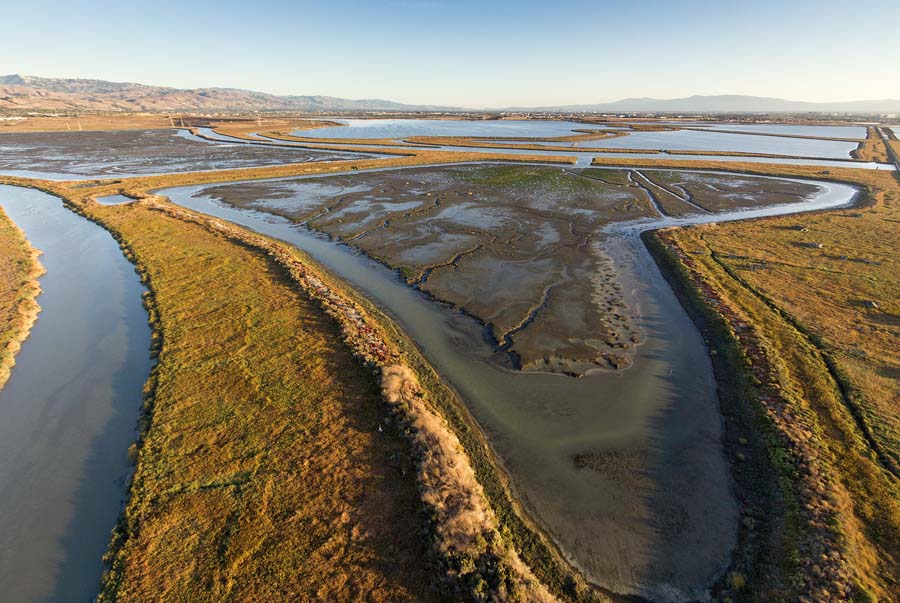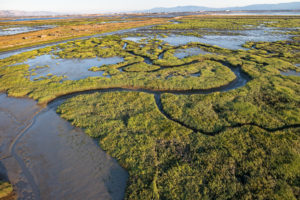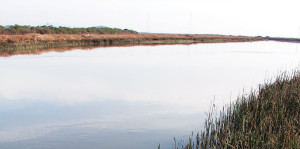Mrs. Semino once had to put on a pair of rubber boots to cook her Thanksgiving turkey. It was a long time ago, in the 1920s, when she and her husband lived by the banks of Sonoma Creek in a place called Wingo. After a storm or high tide, Wingo’s half dozen cabin floors returned to their more natural state in the landscape: wet.
Wingo lies about six miles up the creek from the north shore of San Francisco Bay, in a place now far inland but once flooded by tides twice daily. Before these “baylands” were diked and drained, they were part of an estuarine ecosystem so rich that early explorers spoke of seeing more waterfowl than sky and more salmon than water in the rivers. The abundance of wildlife back then was by all accounts astounding. Paired with the temperate climate, it was practically paradise on earth.
I’ve often taken my daughters to the baylands and made them stand still long enough to watch a great blue heron catch a goby. When they were young, they didn’t really get the term “wetland” so they used to call them waterlands. “Mommy’s taking us to waterland today,” they’d say.
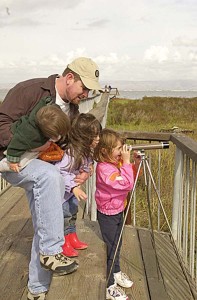
I’ve since become a science writer and met a lot of people who’ve dedicated their lives to studying the waterlands around the Bay—their ecology, the birds in the bushes, and the clams in the mud. “For my Ph.D., I followed individual song sparrows in a tidal marsh, so I knew all their stories—that this one had mated with that one, and then all their kids died, and then she went off with another guy. They have their dramas just like we do,” says Letitia Grenier, a biologist who grew up hiking at her local lagoon near San Diego.
I’ve asked people like Grenier how they describe their work at cocktail parties. Grenier says buzzwords like “conservation biology” draw blanks. What works is the basics: “When I say I’m trying to save the Bay and make sure birds are still around for their kids to see, then they hear it.”
Birds are definitely a draw, and the Bay is a draw for them too. Shorebirds and waterfowl come by the millions to take advantage of the rich and diverse habitats along its shores, making it a major stopover on the Pacific Flyway. “Some people think wetlands are underwhelming, as compared to big mountains, but there’s an ecological bounty and resilience to wetlands that intrigues us,” says Francesca Demgen, a wetlands engineer for URS Corporation.
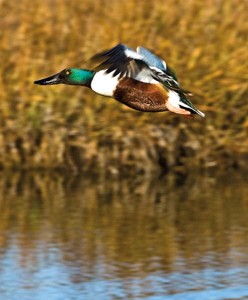
More recently, as cocktail conversations touch on melting polar ice caps, habitat advocates have started pointing out that wetlands are prettier to look at than 12-foot-high flood control levees. Faced with the surge of water that laid waste to Staten Island during Sandy or the French Quarter during Katrina, which would you choose?
“People don’t get it,” says Grenier. “They see ‘Salt Pond Restored’ headlines but don’t realize what a hard fight it is, how we’re working on thin margins without knowing if we’ll win the battle. They don’t realize we’re in the midst of choosing between Blade Runner and the almost-paradise of today’s Bay Area for our future. They figure this will always be here for them and their kids. But it’s not guaranteed.”
With the America’s Cup in town this summer and the new Bay Bridge opening up sooner or later, there’s a potential new audience for this message. Grenier and the three generations of what she calls “environmental ninjas” who came before her want to tell this audience that the Bay wouldn’t be this beautiful, this clean, this wonderful to sail on or live next to if it weren’t for its wetlands.
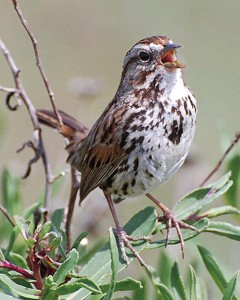
Wetlands filter out the Bay’s pollutants, provide nursery grounds for baby crabs and fish, process harmful nitrogen from our fertilizers and sewage, and slow and soften the waves rolling in and gushes of water running off after a big storm. And we wouldn’t have any of the wetlands we have now if we hadn’t used our tax dollars to buy them back, blast holes in their dikes, and restore their wet look.
And the truth is, we really do want to see ducks beating their wings along the Bay shoreline while we’re stuck in traffic and tiny sandpipers probing the mudflats as we ride our bikes along the
Bay Trail. Though she’s grown up now, my daughter still calls wetlands “waterlands.” It’s a term that brings back good memories. It’s a piece of her awareness of the environment around her. It conjures textures and sensations and wide open spaces you can’t get in HDTV.
“It’s grounding to stand in a flat marsh and see both Mount Diablo and Mount Tam in the distance,” says Demgen. “It’s really cool when the tide goes out and you’re in a channel and the rushes are towering overhead. It’s like being in a maze. You can’t see a thing, but you can hear the birds.”
This is part of Baylands Reborn, a special section in the July 2103 issue of Bay Nature magazine, funded by the following sponsors:
- Cargill is an international producer and marketer of food, agricultural, financial, and industrial products and services. Founded in 1865, the privately held company employs 142,000 people in 65 countries and produces solar sea salt in the San Francisco Bay Area.
- The Coastal Conservancy is a California state agency that protects and restores the natural environment, invests in communities, and helps people get to and enjoy the coast of California and natural lands around San Francisco Bay.
- The Friends of the San Pablo Bay National Wildlife Refuge are dedicated to protecting and preserving our amazing San Pablo Baylands, which provide habitat for the endangered California
- Clapper Rail and Salt Marsh Harvest Mouse and serve as a wetland sponge, soaking up sea level rise.
- The San Francisco Bay Wildlife Society is a not-for-profit cooperating association that supports the education and research activities of the U.S. Fish and Wildlife Service and promotes public awareness and appreciation of the San Francisco Bay and its natural history, helping to conserve and preserve Baylands as essential wildlife habitat.
- The San Francisco Estuary Partnership brings together resource agencies, nonprofits, citizens, and scientists committed to the long-term health and preservation of the San Francisco Bay estuary. The Partnership manages or oversees more than 50 projects that protect, restore, and enhance water quality and habitat in the estuary.
- The Wildlife Conservation Board was created by the state legislature to authorize and allocate funds for the purchase of lands and waters suitable for public recreation; for the preservation, protection, and restoration of wildlife and aquatic habitats; and for the construction of nature-based recreational facilities.

